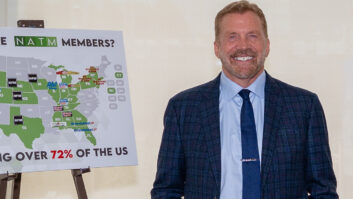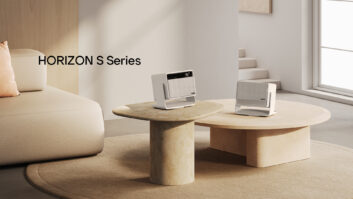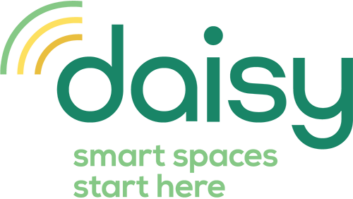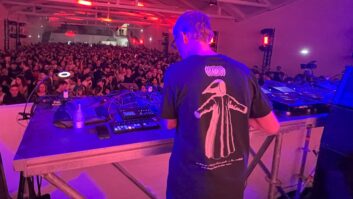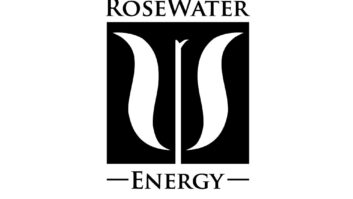When a lagging Lenovo decided to turn up the retail heat in North America two years ago, it cast about for an industry vet who could deliver the goods.
They found their candidate in Mike Abary, who helped grow Vaio for Sony and managed the Chromebook and Galaxy mobile computing businesses for Samsung.
During his brief tenure as VP of Lenovo’s North America consumer business, Abary cracked the mass market by entering no less than Walmart and Costco, while keeping his premium accounts happy through differentiated product and skillful channel management.
The result: 63 percent growth during the fourth quarter of 2015, outpacing all PC brands including Apple, and placement in over 10,000 storefronts.
In this exclusive TWICE Q&A, Abary shares his recipe for growth in a declining market, and hints at plans for the future.
TWICE: What were your marching orders when you joined Lenovo two years ago?
Lenovo saw an opportunity for hyper-growth in the U.S. and Canada. The consumer PC market was growing at a nice clip, but we were stuck at fifth or sixth place, and the North America business was under-indexed relative to our global performance.
In the past the company seemed satisfied with incremental growth, but there was a change at headquarters, an assessment was performed, and a decision was made to bring in a seasoned PC executive to get the business to hyper-growth, albeit responsibly.
TWICE: How does Lenovo define hypergrowth?
Anything exceeding the market by 10 to 15 percent.
TWICE: So what was the game plan?
We were disproportionately represented at certain retailers, and there was an opportunity to balance and expand the portfolio.
TWICE: Please elaborate.
We did really well in the premium space but weren’t competing in the sub-$500 market. We were hardly represented there. We had less than a 3 percent share in that segment during Holiday 2014, and we knew there was an opportunity to participate.
ThinkPad was outperforming in the commercial channel but sales to [small- and medium-sized businesses] through retail were minimal. On the other hand, Yoga [the convertible laptop line] had been doing well, and we wanted to double down on that.
TWICE: So what did you do?
We amplified our innovation leadership and expanded our retail portfolio.
TWICE: Explain.
We leveraged our relationship with Costco. We had several models selling on Costco.com for between $600 and $900, but we had not been in the stores.
We knew their demographic, and addressed it with a technological solution: the Flex 3, a 14- and 15-inch 2-in-1 with a 360-degree clamshell. Convertibles comprise only 25-30 percent of the market, and the Flex 3 is a differentiated product that speaks to our innovation story.

Lenovo’s Flex 3 convertible laptop was Abary’s ticket into Costco.
We came in with one SKU at $500-plus during Holiday 2015. There’s a finite amount of shelf space at Costco, so we knocked someone out and outperformed them by a lot, and quickly became one of Costco’s leading PC suppliers. We were mutually successful and now have permanent placement in Costco stores.
TWICE: Any other retail in-roads?
Yes, Walmart. We weren’t represented there, and one of my bigger objectives to grow our business was that we had to be in the world’s largest retailer.
We started talking to Walmart in-depth at CES 2015, and they were aligned with our plan for products at a sub-$500 price point. We now have product on their shelves.
TWICE: Anyone else?
We hadn’t been a participant in the broadcast channel, and we recently had our first airing of two derivative products on HSN, which was successful.
We also expanded into the military exchanges and to regional retailers like Nebraska Furniture Mart, while also reinforcing our pre-existing relationships.
All told, we’re now in 10,000 storefronts vs. 3,000-4,000 prior, and Q4 of 2015 was our largest quarter ever.
According to NPD we were the fastest- growing PC brand at U.S. retail in 2015, up 46 percent year over year in a declining market that was down 3-4 percent. I like to think we were helping the PC industry overall by bucking the trend; the declines would have been greater otherwise.
TWICE: So now you’re straddling mass and class. How do you balance both?
We’re managing the retail channel, and have had no pushback from existing customers. We’re not overlapping in our assortment; we’re cognizant of the need for derivative models; and we engage in retailers without direct head-to-head competition. For example, Costco is the only warehouse club we sell.
TWICE: What about e-tailers?
We do sell online — Amazon and Newegg are strong partners. There are different dynamics online; there’s no MAP or UPP, which hasn’t worked for the PC business. Instead we manage it through programming.
TWICE: So what’s next for Lenovo’s consumer business in North America?
I think there’s an opportunity to reach small businesses through the retail channel, and we will hone in on gamers. Overall though, we will continue to keep our foot on the gas, and will continue to deliver growth and innovation.





